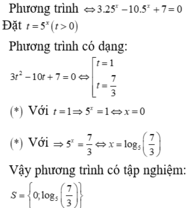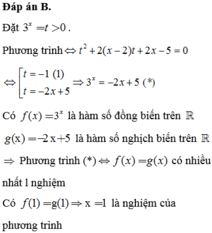Số nghiệm thực của phương trình \(x^4-9x^2+24x-16=0\)
Hãy nhập câu hỏi của bạn vào đây, nếu là tài khoản VIP, bạn sẽ được ưu tiên trả lời.


\(x^4-9x^2+24x-16=\)\(0\)
\(\Leftrightarrow x^4-\left(9x^2-24x+16\right)=0\)
\(\Leftrightarrow x^4-\left(3x-4\right)^2=0\)
\(\Leftrightarrow\left(x^2+3x-4\right)\left(x^2-3x+4\right)=0\)
\(\Leftrightarrow\left(x+4\right)\left(x-1\right)\left[\left(x-\frac{3}{2}\right)^2+\frac{7}{4}\right]=0\)
Vì \(\left(x-\frac{3}{2}\right)^2+\frac{7}{4}>0\forall x\)nên:
\(\left(x+4\right)\left(x-1\right)=0:\left[\left(x-\frac{3}{2}\right)^2+\frac{7}{4}\right]\)
\(\Leftrightarrow\left(x+4\right)\left(x-1\right)=0\)
\(\Leftrightarrow\orbr{\begin{cases}x+4=0\\x-1=0\end{cases}}\)\(\Leftrightarrow\orbr{\begin{cases}x=-4\\x=1\end{cases}}\)
Vậy phương trình có tập nghiệm \(S=\left\{1;-4\right\}\)
\(x^4=6x^2+12x+\)\(8\)
\(\Leftrightarrow x^4-2x^2+1=4x^2+12x+9\)
\(\Leftrightarrow\left(x^2-1\right)^2=\left(2x+3\right)^2\)
\(\Leftrightarrow|x^2-1|=|2x+3|\)\(|\)
xét các trường hợp:
- Trường hợp 1:
\(x^2-1=2x+3\)
\(\Leftrightarrow x^2-1-2x-3=0\)
\(\Leftrightarrow x^2-2x-4=0\)
\(\Leftrightarrow\left(x-1\right)^2-5=0\Leftrightarrow\left(x-1\right)^2=5\)
\(\Leftrightarrow\orbr{\begin{cases}x-1=\sqrt{5}\\x-1=-\sqrt{5}\end{cases}\Leftrightarrow\orbr{\begin{cases}x=1+\sqrt{5}\\x=1-\sqrt{5}\end{cases}}}\)
-Trường hợp 2:
\(x^2-1=-2x-3\)
\(\Leftrightarrow x^2-1+2x+3=0\)
\(\Leftrightarrow x^2+2x+2=0\)
\(\Leftrightarrow\left(x+1\right)^2+1=0\)
\(\Leftrightarrow\left(x+1\right)^2=-1\left(vn\right)\)(vô nghiệm)
Vậy phương trình có tập nghiệm: \(S=\left\{1\pm\sqrt{5}\right\}\)

nhận thấy x = 0 không là nghiệm của phương trình
Chia 2 vế phương trình cho x2, ta được :
\(x^2-9x+24-\frac{27}{x}+\frac{9}{x^2}=0\) ( 1 )
đặt \(t=x+\frac{3}{x}\)
( 1 ) \(\Leftrightarrow\left(x+\frac{3}{x}\right)^2-9\left(x+\frac{3}{x}\right)+18=0\)
\(\Leftrightarrow t^2-9t+18=0\Leftrightarrow\left(t-6\right)\left(t-3\right)=0\Leftrightarrow\orbr{\begin{cases}t=6\\t=3\end{cases}}\)
Khi đó : \(\orbr{\begin{cases}x+\frac{3}{x}=6\Leftrightarrow x=3\pm\sqrt{6}\\x+\frac{3}{x}=3\Leftrightarrow x\in\varnothing\end{cases}}\)

a. \(x^4-10x^3+25x^2-36=0\)
=> \(x^3\left(x-3\right)-7x^2\left(x-3\right)+4x\left(x-3\right)+12\left(x-3\right)=0\)
=>\(\left(x-3\right)\left(x^3-7x^2+4x+12\right)=0\)
=>\(\left(x-3\right)\left[x^2\left(x-2\right)-5x\left(x-2\right)-6\left(x-2\right)\right]=0\)=> \(\left(x-3\right)\left(x-2\right)\left(x^2-5x-6\right)=0\)
=> \(\left(x-3\right)\left(x-2\right)\left(x+1\right)\left(x-6\right)=0\)
=>\(\left[\begin{matrix}x=3\\x=2\\x=-1\\x=6\end{matrix}\right.\)
b) \(x^4\) - \(^{9x^2}\) - 24x - 16 = 0
=> \(x^3\left(x-4\right)+4x^2\left(x-4\right)+7x\left(x-4\right)+4\left(x-4\right)=0\)=>\(\left(x-4\right)\left(x^3+4x^2+7x+4\right)=0\)
=> \(\left(x-4\right)\left[x^2\left(x+1\right)+3x\left(x+1\right)+4\left(x+1\right)\right]=0\)=>\(\left(x-4\right)\left(x+1\right)\left(x^2+3x+4\right)=0\)
=> \(\left(x-4\right)\left(x+1\right)=0\) (vì x^2 + 3x + 4> 0)
=>\(\left[\begin{matrix}x=4\\x=-1\end{matrix}\right.\)
a,pt\(\Leftrightarrow\left(x^4-10x^3+25x\right)-36=0\)\(\Leftrightarrow\left(x^2-5x\right)^2-36=0\)
\(\Leftrightarrow\left(x^2-5x-6\right)\left(x^2-5x+6\right)=0\)\(\Leftrightarrow\left[\begin{matrix}x^2-5x-6=0\\x^2-5x+6=0\end{matrix}\right.\)
\(\Leftrightarrow\left[\begin{matrix}\left(x+1\right)\left(x-6\right)=0\\\left(x-2\right)\left(x-3\right)=0\end{matrix}\right.\)\(\Leftrightarrow\left[\begin{matrix}x=-1,x=6\\x=2,x=3\end{matrix}\right.\)
vậy pt có 4 nghiệm x=(-1,6,2,3)

\(T=\dfrac{\left(x1\cdot\sqrt{x_2}+x_2\cdot\sqrt{x_1}\right)}{x1^2+x_2^2}\)
\(=\dfrac{\sqrt{x_1\cdot x_2}\left(\sqrt{x_1}+\sqrt{x_2}\right)}{\left(x_1+x_2\right)^2-2x_1x_2}\)
\(=\dfrac{4\cdot\sqrt{x_1+x_2+2\sqrt{x_1x_2}}}{9^2-2\cdot16}=\dfrac{4\cdot\sqrt{9+2\cdot4}}{81-32}\)
\(=\dfrac{4\sqrt{17}}{49}\)

Đáp án B.
Đặt 3x = t > 0.
Phương trình <=> t2 + 2(x – 2)t + 2x – 5 = 0

Có f(x) = 3x là hàm số đồng biến trên ℝ
g(x) = –2x + 5 là hàm số nghịch biến trên ℝ
=> Phương trình (*) ó f(x) = g(x) có nhiều nhất l nghiệm
Có f(1) = g(1) => x = 1 là nghiệm của phương trình.

Đáp án B.
Đặt 3 x = t > 0 .
Phương trình
⇔ t 2 + 2 ( x − 2 ) t + 2 x − 5 = 0 ⇔ t = − 1 ( 1 ) t = − 2 x + 5 ⇒ 3 x = − 2 x + 5 (*)
Có f ( x ) = 3 x là hàm số đồng biến trên R
g ( x ) = − 2 x + 5 là hàm số nghịch biến trên R
Phương trình (*) ⇔ f ( x ) = g ( x ) có nhiều nhất l nghiệm
Có f ( 1 ) = g ( 1 ) ⇒ x = 1 là nghiệm của phương trình



\(\Leftrightarrow x^4-x^3+x^3-x^2-8x^2+8x+16x-16=0\\ \Leftrightarrow\left(x-1\right)\left(x^3+x^2-8x+16\right)=0\\ \Leftrightarrow\left(x-1\right)\left(x^3+4x^2-3x^2-12x+4x+16\right)=0\\ \Leftrightarrow\left(x-1\right)\left(x+4\right)\left(x^2-3x+4\right)=0\\ \Leftrightarrow\left[{}\begin{matrix}x=1\\x=-4\\\left(x-\dfrac{3}{2}\right)^2+\dfrac{7}{4}=0\left(vô.n_o\right)\end{matrix}\right.\Leftrightarrow\left[{}\begin{matrix}x=1\\x=-4\end{matrix}\right.\)